In this fourth article in our series on what is the best Kei Truck / Kei Van to export from Japan, I’d like to look now at the whole Kei Van thing. But first, I’d like to throw in my two cents worth on one of the most popular of all Mini Trucks: The Daihatsu Hi-Jet.
Daihatsu Hi-Jet
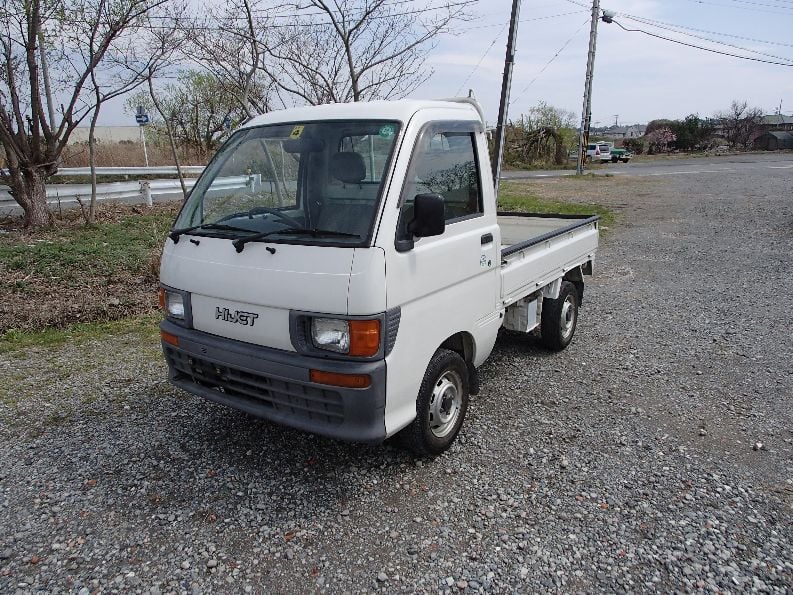
The Hi-Jet has had one of the longest production runs of any Japanese kei truck, having first come out as a light truck in 1960, and it is a favorite to export from Japan to the USA and to Canada. The guys that have them really like them and, although I have not driven a Hi-Jet off-road, I am always impressed right away by the feeling of quality when I drive a Hi-Jet; component quality and general build quality. Every test drive I’ve done around town in a Hi-Jet mini truck has been a pleasure.
The powerful little engine has good grunt, and the engine note is nice, too: warm and with good, responsive revving. I especially like the Hi-Jet transmission: it is generally smooth and firm with no watery feeling in the shift linkage. Naturally, each used kei truck will be different, one that has been very heavily used off road and poorly shifted by its previous owner may have a transmission that is prematurely worn and feels sloppy. But I myself have never driven a used Hi-Jet that was like that. Of course, this is a truck, not a sports car, and the clutch is firm and the Hi-Jet wants you to step in fully on the clutch when you make your gear changes; quick, snappy, half clutch gear changes are not what trucks like to do, and the Hi-Jet is no exception. These transmissions are built for strength, not sports. I certainly do like the trans on the Hi-Jet, and I also found the steering on the non-power-steering units that I have driven to be responsive and not too heavy, and the overall ride is nice and quiet (for a mini truck, that is).
Overall I guess I’d say that the Hi-Jet is just a bit more “poshy” than most of the other kei trucks I have driven. So, as a good bet to export directly from Japan when you are looking to buy a kei truck yourself, the Daihatsu Hi-Jet gets the thumbs up from me.
What About the Mini Vans?
The Japanese mini van is a great concept: Practical and economic, these small but highly capable vehicles are so useful. You can get in and out of very tight spots, as I have done many a time, and you can carry quite a load. If you’ve got the 4WD package, you can do pretty nearly the same off-roading that you can do in a 4WD Japanese kei truck. (Except that the kei van has more weight up top due to the very nature of the van body so, when you’re off-road on a serious incline to left or right, the kei van will tip over before the kei truck does. But more on this issue later.)
For many years I had a 2WD 1996 Subaru Sambar with the supercharged EN07 engine (the “Clover 4”) and the Sun-Sun Roof (like what you see on this Domingo, the 1.2 liter brother of the Sambar).
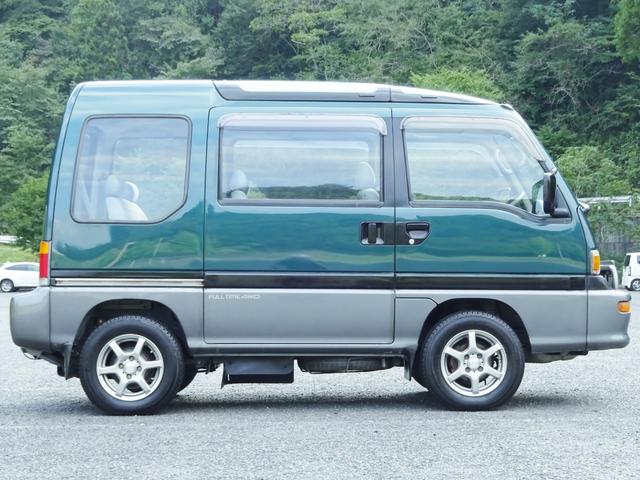
That was a brilliant vehicle. The little supercharged 660cc straight four had excellent low-end grunt from a standing start. It was geared very low in first, a 25.219:1 ratio, and I could haul pretty well anything in it. It never lacked power or get up and go. The wheel base was a very short 1,885mm (6.2ft.) giving me a tight turning circle of only 3.9 meters (12.8 ft.), and with the whole thing being only 1,395mm (4.6 ft.) wide, I could get my Sambar van into, and, more importantly, out of, amazingly tight spots.
I remember once in Kamakura, where we went to see the Great Buddha,

the traffic was all blocked up and I thought that I would just try one of the small side streets to see if I could get around the jam. Bad idea. That narrow little Japanese street narrowed further, and then narrowed again. I sweat. We ended up in a conglomeration of little back lots, each no bigger than a matchbox it seemed to me at the time. But the diminutive size, the tight turning circle, and the great view from the big front picture window coupled with the forward control seating position, meant that my Sambar could wiggle us back out of that cul-de-sac which would have trapped any larger or wider-turning vehicle forever.
The low-waisted rear windows on that model of Sambar (the V-KV series)
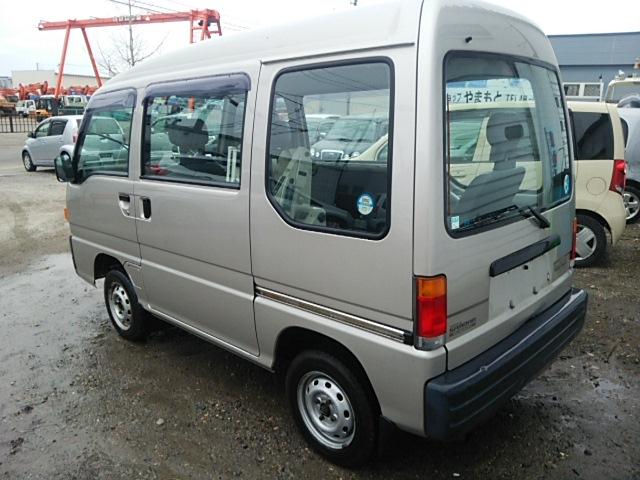
meant that I could see behind us very well and could go back just as far as necessary and not scrape the back wall of Mr Yamamoto’s house.
Now this thing about windows raises an important issue with regards to newer vs older Japanese kei vans: outward visibility.
Just the other day I borrowed my friend’s 2012 model year Suzuki Every van (DA64W chassis),
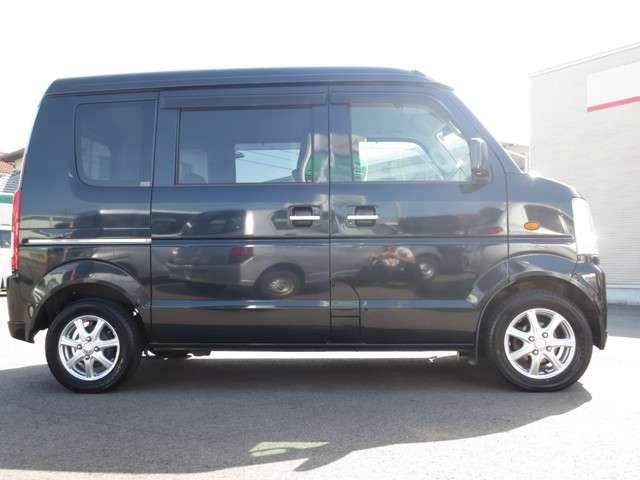
and I thought, since I’m in the middle of writing this series of blog posts about exporting kei vans and kei trucks from Japan, I’d make a special note of my impressions of the newer kei van vs my older Sambar van.
The first thing that I noted was how easy it is to climb up into the Suzuki Every. There’s a nice little step placed low and easy for your foot.
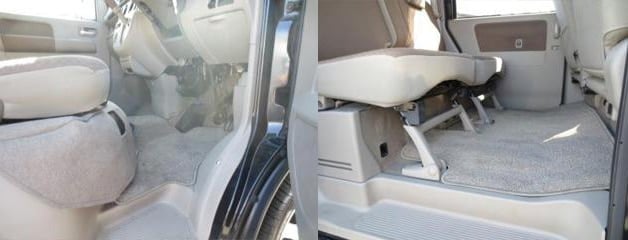
Next I noticed the many convenient things like the big overhead storage bins and various other pockets and holders and convenient details that the Suzuki has in proliferation and which my Sambar did not have to the same degree.
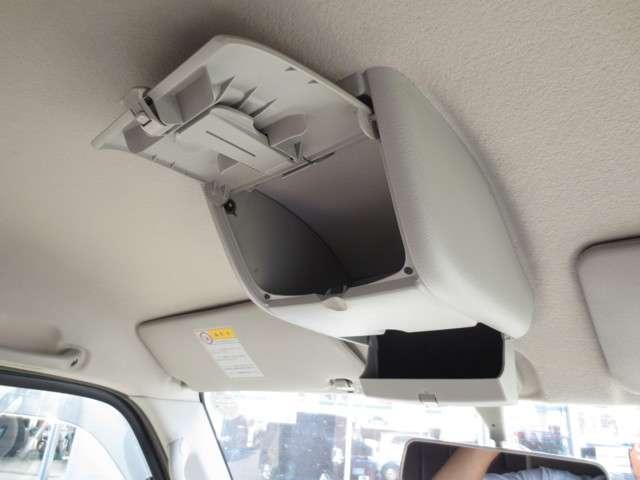
The Every is just much more modern. And it’s just a bit bigger, too. After October of 1998 all kei vehicles got bigger.
It’s built solid and there’s good power from the turbo-charged engine so that climbing up Mount Fuji to get up to where we live here is no strain for the Suzuki Every. My friend takes her mini van on the highway, too, and tells me that she never lacks power for whatever maneuver is needed.
Downsides? Well, the new Every van, like all newer-model Japanese mini vans, has some problems that are shared with the older units, and some that are unique to the newer vehicles.
All Japanese kei vans (all vans, really) have certain problems that are inherent in their design, namely: 1) they are tippy in sharp cornering at speed, and 2) they are very exposed, sometimes frighteningly exposed, to crosswinds on the highway.
I remember one time crossing the Fuji River bridge on the Tomei Expressway on a windy day in my Sambar. I had to slow down to 70km/h to avoid being blown off the bridge. The big highway truck behind me, which suddenly assumed monstrous proportions in my mind, was not pleased. And I was not pleased that he was not pleased and was right on my ass and breathing down my neck.
I thought that this exposure to cross winds was worse on my Sambar with its rear-mounted engine and thus light front end, but no, the front-engined Suzuki Every feels about the same. In the end they are both light, tall metal boxes.
And related to this problem was a feeling of tippiness in quick cornering. Now here my Sambar was worse than the Every because the Sun-Sun Roof added a fair amount of weight right up top. But, as I say, these are problems inherent to the design of vans generally and so you just learn to take it easy on corners and to pay attention to any wind warnings if you are planning a highway run.
Another downside of the newer Suzuki, and of pretty well all newer Japanese minivans, is the high waist line: the rear and side windows are not very big top to bottom due to body design guidelines for the incorporation of improved rollover safety. On the earlier Sambar vans the windows are deeper and you can see much better when backing up; especially when you have to back and turn. (Compare the side views of the two vans in the photos above.) In the new Every, I am less confident backing because I just can’t see out and down to the rear as well as I can in the older Sambar.
This is an important, practical reason why it may sometimes be better to buy an older used car than a newer model. (Now this is not just the used car salesman in me talking, guys. You know it.) If the import rules for your country (America, Canada, the UK, Australia, or Europe) say that you can only import older used mini vans from Japan, don’t sweat it. Some of those older models have distinct advantages over many of the newer, more regulated, designs. (This is one of my favorite topics to gripe about, the negative influence of many government regulations on car designs; but I won’t start on it now, much as I would like to rant and rave.)
Yep, the old Sambar mini vans and other Japanese mini vans (pre October 1998) have a number of good points, and I’ll give you one more for the Sambar. With the Suzuki Everys and with the old Mitsubishi Minicab van that I have driven (U19V, that was a sweet and cute little kei van),
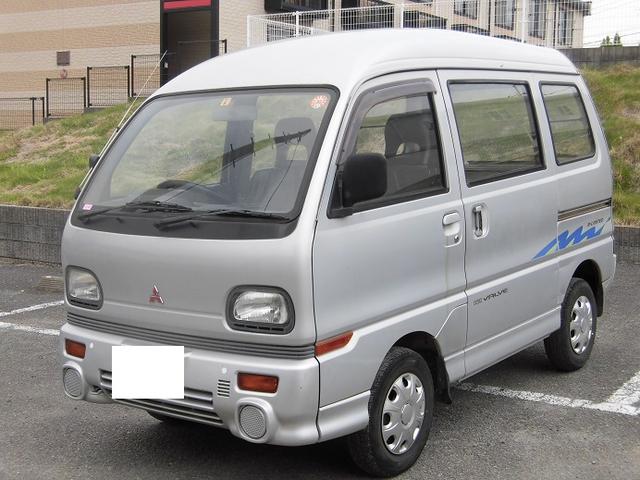
the engine is up front under the floor between the seats. This layout gives definitely more engine noise and vibration than I found in my Sambar, which has the engine way back at the rear, behind the rear axle.
And that engine, that little supercharged straight four…What a fun little unit.
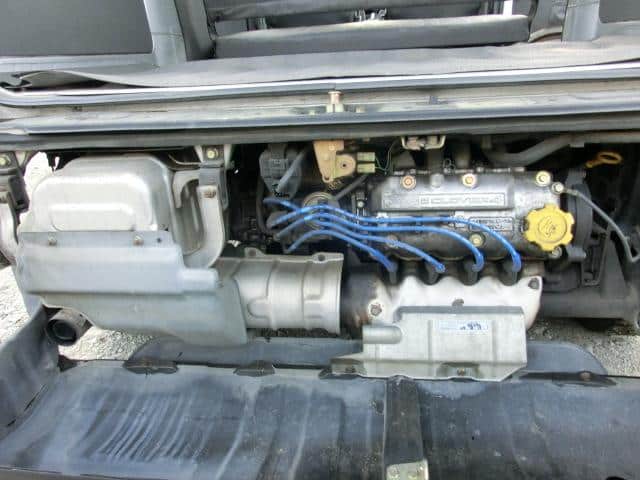
Gobs of torque and a very sporty, throaty sound. I loved it. The only drawback of it is one that is generally shared with small supercharged engines vs turbocharged units: it seems a bit “breathy” at high rpm and pull and power drop off sooner than with a turboed engine.
But no worries because, as we noted, these Japanese mini vans are high, boxy work trucks, you’re not buying one for hot dogging around town. A Japanese kei van is a workmate, a tiny but highly capable load hauler, and a good, reliable little friend. They are to be used within their natural design limitations. And for use within those limitations, I strongly recommend the older Japanese mini vans.
And, looking at the prices and conditions of kei vans available in Japan today, I think that right now (late 2019) we are in a bit of a sweet spot if you’re looking to import an early to mid-90s unit from Japan yourself. Good, clean units are going for reasonable prices these days.



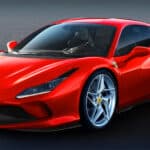

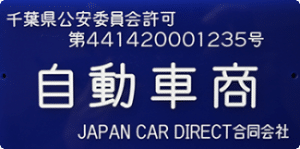

How much do the Honda N vans sell for in good condition second hand?
Hi Graham,
Thank you for your comment!
The best condition lowest mileage turbo high roof 4WD version go for over 10,000 GBP but the 2WD with a few more kilometers go for closer to 5,000 GBP.
If you are planning to import to the UK though you are probably better to get a van that is more than 10 years old for ease of MOT and registration.
To learn more and see what is available at the dealer auctions please come and register /auction-registration/?swcfpc=1
We look forward to exploring your options!
Best Regards,
JCD Team
Just a quick Thank You for these very informative blog posts. I’ve wanted a 4WD micro van ever since owning a couple of VW vans in the 1980s, but first, I need a 4WD Hijet Climber.
THank you for your reply! Please register for access to the auction marektplace if you haven`t already. /auction-registration/ One of our agents will be with you shortly.